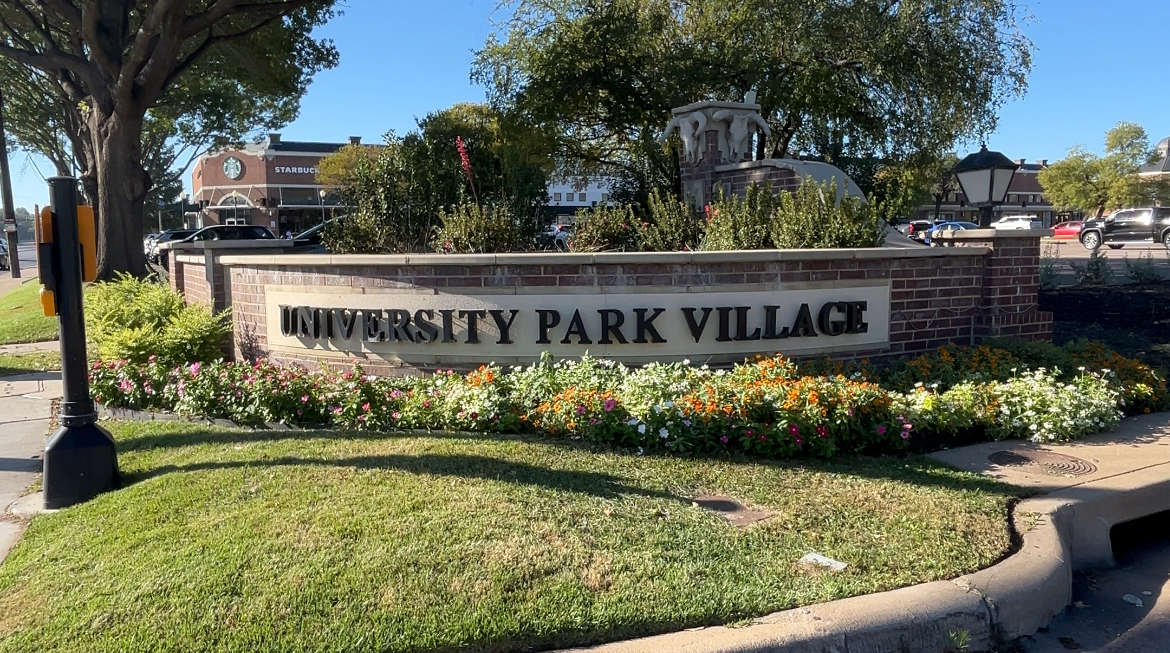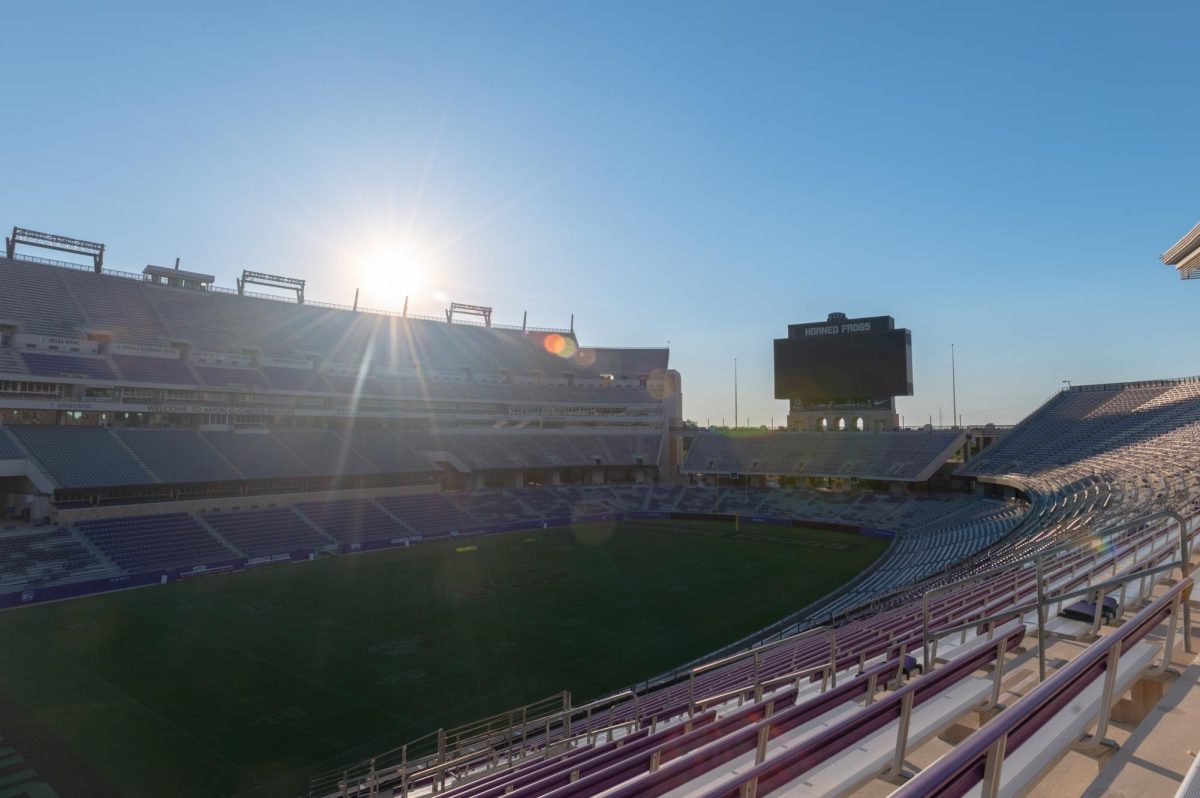For more than 60 years, the Crowne Plaza Invitational golf tournament, better known as the Colonial, has attracted golf fans to Fort Worth, with as many as 150,000 spectators covering the greens each May to see players like Ben Hogan, Tiger Woods and Phil Mickelson.
Although the tournament does give the local economy a boost, the crowds who pack area parking lots and streets do not always turn significant profits for the retailers, restaurants and hotels near the Colonial Country Club.
The tournament brought an estimated $30 million in economic activity to the community, according to a 2007 economic study commissioned by the country club and performed by Impact DataSource, an economic consulting firm based in Austin.
About $24 million of this activity came from direct revenues and spending, Impact Data Source principal economist Jerry Walker said. This included money generated on site such as entry fees and revenues for caterers as well as spending in the community by golfers, tournament participants and out-of-town spectators. The other $6 million of indirect activity included sales and salaries at area businesses.
The study has not been updated, so the current impact is difficult to determine, but interviews with businesses near the club found the effects of the tournament could vary, aiding some but not others.
Marvin Leonard, a local businessman and the club’s founder, helped start the tournament in 1946. He saw establishing a major PGA Tour event in the Fort Worth as a way to bolster not only the local economy but also civic pride.
The inaugural Colonial National Invitation Tournament, as it was known then, brought crowds of an estimated 5,000 and the winners took home a purse of $15,000.
Eventually the tournament became one of the first PGA Tour events to have ticket sales reach $100,000 and, today it remains the longest running event on the tour still being held at its original site.
In 1950, the club partnered with the city’s largest retailers to place advertisements in department store windows and, various downtown intersections were even stenciled with the message, “Come to Colonial.”
This exposure helped drive the tournament toward national recognition. Now, the Colonial winners share a purse of $6.4 million and the tournament is one of the hotspots on the Fort Worth calendar, along with the Fort Worth Stock Show and Rodeo.
Today, most spectators come from the North Texas area, but about one-fourth travel to Fort Worth from places all over the nation. These visitors typically spend money at local hotels, restaurants and retailers. This sum of visitor spending provides the most indicative statistic when assessing the impacts of sporting events, said Terry
Clower, director of the Center for Economic Development and Research at the University of North Texas.
“Visitor spending is important because it presumes economic activity that would not have occurred absent the sporting event,” Clower said.
Economic impact studies like the one completed in 2007 can assess the tournament’s impact through spending and tax revenue, but to paint an accurate picture of its exact impact would be impossible, Clower said. To a certain extent, he said, studies like these rely on estimates because the calculation of every dollar generated from the tournament would be difficult.
“Having a PGA Tour event come through town, in some respect, adds to the cultural amenities that make Fort Worth a desirable place to live and, that’s something we cannot do a really good job of quantifying, Clower said. “But just because we can’t quantify it doesn’t mean that it is not real, and doesn’t mean that it is not important.”
Other Area Sporting Events
Although the annual golf tournament at the Colonial is one of Fort Worth’s major events of the year, the city also features sporting events such as the Fort Worth Stock Show and Rodeo and NASCAR races at Texas Motor Speedway.
The HP Byron Nelson Championship golf tournament held each May at the Four Seasons Resort and Club Dallas at Las Colinas in Irving has a similar economic impact, bringing roughly $30 million in spending to the area said the Irving Convention and Visitors Bureau. Out of the estimated attendance of about 250,000, about 75,000 spectators are visitors.
In comparison, the Fort Worth Stock Show and Rodeo brings an estimated $100 million to the city. The event has existed almost 50 years longer, and lasts 23 days compared with Colonial’s six days. Also, the Stock Show, on average, brings about 950,000 people from all 50 states and more than 40 foreign countries while, the Colonial attracts far fewer people mostly from the North Texas area.
Impact on Local Businesses
Local businesses have reported increased sales, but the high levels of traffic and parking problems created by the event could deter some locals and other customers from making purchases in area businesses.
Restaurants located on University Drive, just minutes away from the tournament, receive a slight bump in sales during the week, but record most revenue during the weekend, when a majority of spectators visit.
Hoffbrau Steaks Manager Anthony King said the restaurant usually serves many out-of-towners walking over from nearby hotels.
During lunch, sales dip by about $500 each day, King said. But, dinner sales typically make up for the loss at lunch, showing a $500-$1,000 daily increase.
Last year, during the Colonial, the restaurant recorded sales of more than $51,000 for the week, compared with $49,000 usually seen on the average week during the year.
Other area events throughout the year bring in more sales, King said. During events such as major horse shows at Will Rogers Coliseum or during area school graduations, weekly sales could be boosted by as much as $9,000.
King said major events like the Colonial did not warrant new hires for the restaurant. He usually just adds one or two servers to the dinner shift for a total of 10 to 12 servers.
Across the street at Silver Fox Steakhouse, the May tournament traditionally brings more reservations and walk-ins, but sales are not much different than other holiday “spikes,” such as Valentine’s Day or Mother’s Day. Like other area restaurants, Silver Fox sees fluctuation in its sales during the weekend days of the tournament week.
“It’s typically like a regular Friday and Saturday night, just a little bit more enhanced,” Silver Fox Proprietor Colin Kelly said.
Having also run a restaurant near the Rangers Ballpark in Arlington, Kelly is well aware of the draw of major sporting events. He said people assume businesses near big venues would have high revenues, but the events’ traffic jams can discourage people from visiting.
Owning a business near a big venue could be a double edge sword, Kelly said. Although businesses received new customers, those regular customers might not come because of the traffic.
In addition to locals avoiding the area, businesses close to the country club must also deal with spectators filling up their parking lots. The passerby would see a full parking lot and would assume the restaurant or retail store was too busy to go in, when in reality some of the cars could be tournament spectators, he said.
Instead of marketing to the crowds of spectators, Silver Fox aims its advertising toward a small crowd associated with the tournament for a more long-term investment. Kelly said the restaurant gave about 250 discount cards to be placed into gift bags distributed to caddies, golf players and club members during the tournament.
“We try to gear a lot of our marketing towards our local people just to build that loyalty,” Kelly said. “We are doing something for the Colonial members and Crowne Plaza and then Silver Fox will be in their mind throughout the year, so that way they’ll come back throughout the year and dine as regular guests.”
The Sunday after the tournament, a day the restaurant is not traditionally open, the restaurant hosts a dinner for about 100 people on the tournament planning committee, he said.
With an increase in hotel room rates and room sales, the event’s impact was more evident at local hotels. According to the 2007 study, room sales at local hotels accounted for $286,072. From these sales, the City of Fort Worth collected $20,025 in hotel occupancy taxes during the six days of the tournament, which was only about $5,700 less than the tax revenue generated by Courtyard by Marriott for the entire month of May in that year.
“[The tournament week] is one of our five busiest weeks of the year,” Colleen Radtke, general manager at Courtyard by Marriott, said.
The hotel, which is located across the way from the country club, usually climbs to 80 percent occupancy during the week, up 10 percentage points from its typical hotel occupancy. CBS media crews, spectators and some golfers all call the hotel home during the week. The Friday, Saturday and Sunday of tournament week usually books up weeks in advance, Radtke said.
Due to the higher demand for rooms, the hotel rates could go up $40-$50 per night, to $189 on some nights, up from $140, she said.
Similar higher rates could be found at other area hotels. Residence Inn by Marriott has rates starting from $224 on Monday night during tournament week, which is up from $174 for the same day in April.
For retail shops like Ruby, which is located in University Park Village, Colonial crowds do not equate to an increased traffic owner Lynn Schoondergang said.
She considered the business’s high traffic times to be during Christmas and area graduations. Some women might come in and purchase jewelry or flip-flops prior to the tournament, but she believed most people did not leave the tournament since shopping was usually available on site.
At the Club
Besides enhancing sales at area businesses, the tournament also provides jobs. Work for the tournament itself is a year around business. In June and July meetings are held to talk about areas that went well and others that need changed for next year. Starting in August and September, the staff begins to secure sponsors. January marks the beginning of actual tournament preparation, which continues up until the event tees off in May.
A full-time staff prepares and handles tournament operations throughout the year along with club members, who divide into groups to cover all aspects of the event, Tournament Manager Dennis Roberson said.
During tournament week, the staff at the Colonial Country Club more than doubles, as about 200 temporary employees join the regular staff of 165, said Celeste Cathey, director of human resources at Colonial Country Club. Hiring begins in February and continues right up to the tournament week.
Of the 200 temporary staffers hired, about 60 percent are new and 40 percent are returning workers, she said. These employees are paid by the hour to work in positions ranging from hospitality and reception to purchasing.
The employees typically represent a variety of demographics, she said, from college-aged to those in career transition. Some temporary employees have full-time jobs and take off the week to work at the tournament.
In addition to temporary staff members, the country club also welcomes a cast of around 1,200 volunteers to support in various positions, Roberson said. Like those coming to the tournament, volunteers come primarily from the North Texas area, although some do travel from states across the nation.
Revenues generated for club, including spectator passes, parking fees and sales from pro-shop and restaurant totaled $8.6 million in 2007. This money is all put back into the tournament Roberson said. In 2011, the tournament raised $6.7 million for charities in Tarrant County.
With extended weather forecasts showing temperatures in the low 90s and ticket sales, in early April, already slightly ahead of last year, the tournament could be on track to draw even more spectators this year.
In recent years, the tournament has seen somewhat of a wane in purchases of the larger corporate hospitality packages, but Tournament Director Michael Tothe remained hopeful that with the recovering economy, the corporate community would return.
More spectators could mean more visitors, which will hopefully translate into new dollars for the local economy.



